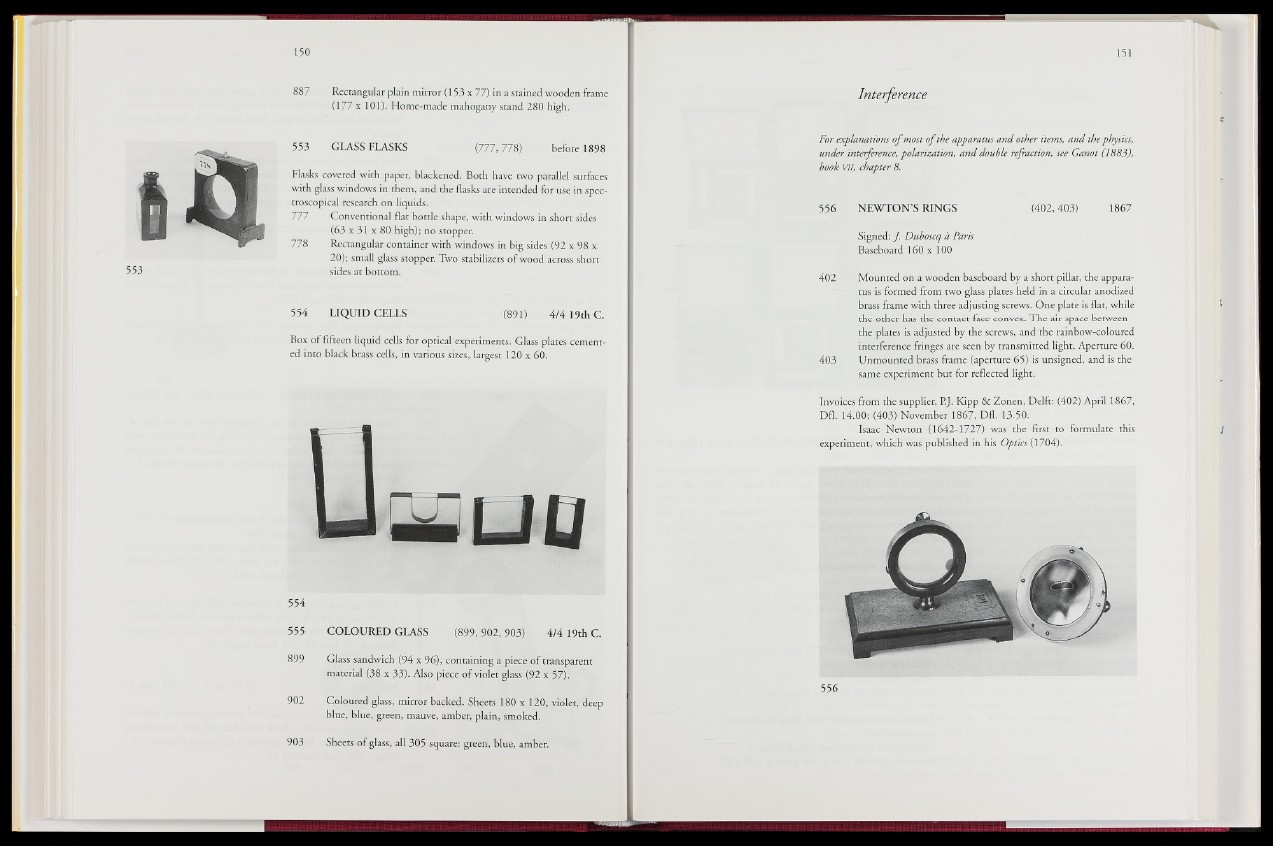
887 Rectangular plain mirror (153 x 77) in a stained wooden frame
(177 x 101). Home-made mahogany stand 280 high.
553 GLASS FLASKS (777, 778) before 1898
553
Flasks covered with paper, blackened. Both have two parallel surfaces
with glass windows in them, and the flasks are intended for use in spec-
troscopical research on liquids.
777 Conventional flat bottle shape, with windows in short sides
(63 x 31 x 80 high); no stopper.
778 Rectangular container with windows in big sides (92 x 98 x
20); small glass stopper. Two stabilizers of wood across short
sides at bottom.
554 LIQUID CELLS (891) 4/4 19th C.
Box of fifteen liquid cells for optical experiments. Glass plates cemented
into black brass cells,sin various sizes, largest 120 x 60.
554
555
899
902
COLOURED GLASS (899, 902, 903) 4/4 19th C.
Glass sandwich (94 x 96), containing a piece of transparent
material (38 x 33). Also piece of violet glass (92 x 5Wf.
Coloured glass, mirror backed. Sheets fcO x 120, violet, deep
blue, blue, green, mauve, amber, plain, smoked.
903 Sheets of glass, all 305 square: green, blue, amber.
Interference
For explanations o f most o f the apparatus and other items, and the physics,
under interference, polarization, and double refraction, see Ganot (1883),
book VII, chapter 8.
556 NEWTON’S RINGS (402,403) 1867
Signed: J. Duboscq & Paris
- Baseboard 160 x 100
402 Mounted on a wooden baseboard by a short pillar, the appara-
” tus is formed from two glass plates held in a circular anodized
brass frame with three adjusting screws. One plate is flat, while
the other has the contact face convex. The air space between
the plates is adjusted by the screws, and the rainbow-coloured
interference fringes are seen by transmitted light. Aperture 60.
403 Unmounted brass frame (aperture 65) is unsigned, and is the
same experiment but for reflected light.
Invoices from the supplier, P.J. Kipp & Zonen, Delft: (402) April 1867,'
Dfl.i||4.00; (403) November 1867, 'Dfl. 13.50.
Isaac Newton (1642-1727Bwas the first:#6 formulate this
experiment, which was published in his Optics (1704).